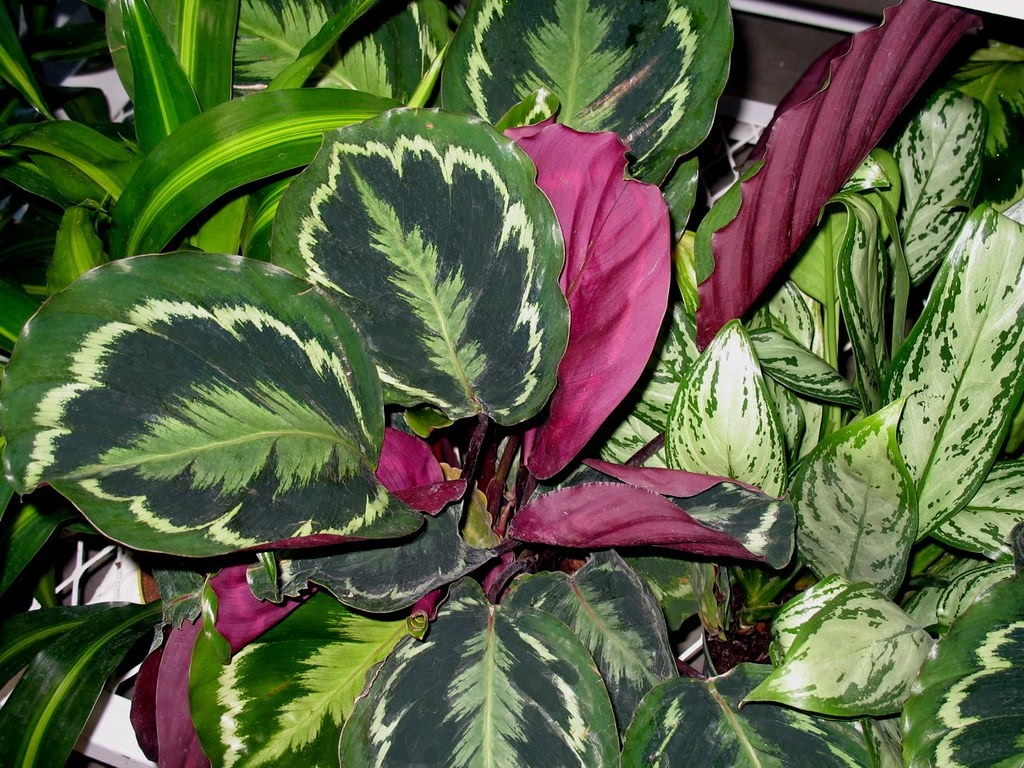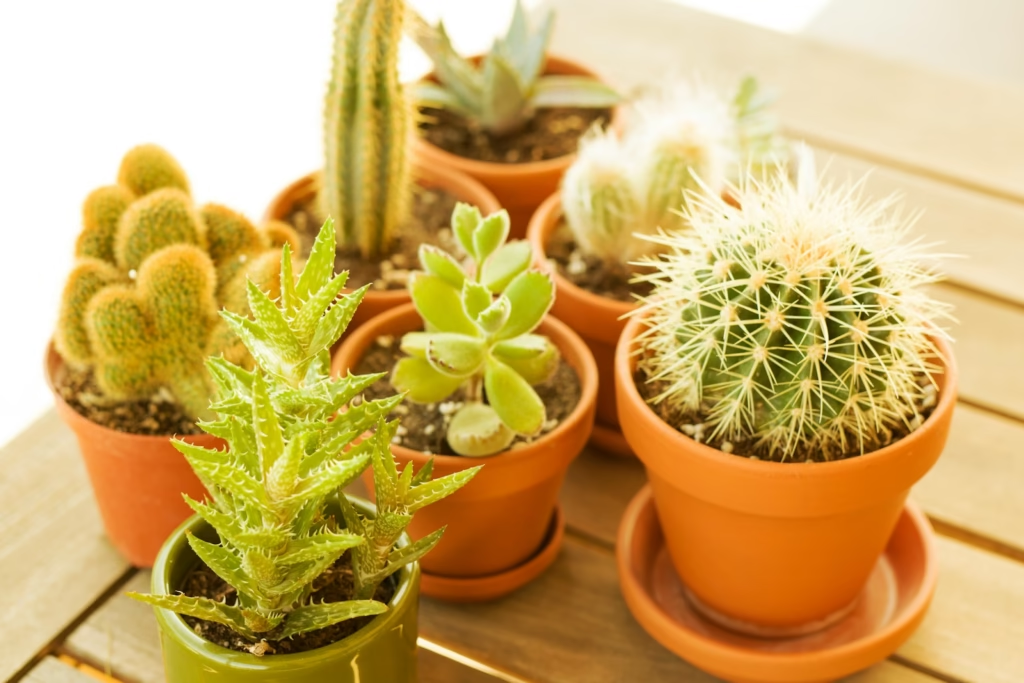Introduction to Calathea: The Queen of Indoor Plants
The Calathea plant, often affectionately referred to as the “dancing queen,” is celebrated for its stunning and diverse foliage that captures the attention of plant enthusiasts around the globe. This remarkable indoor plant belongs to the Marantaceae family and is native to the tropical regions of South America, particularly Brazil and Colombia. Its natural habitat comprises humid forests where it thrives under a canopy of larger plants, leading to its preference for indirect light and high humidity, which can often make it challenging to cultivate outside its native environment.
One of the most distinctive features of Calathea is its mesmerizing leaf patterns and colors, which vary significantly among the various species. The leaves often display intricate designs in shades of green, purple, pink, and white, showcasing a breathtaking array of contrasting tones that add an artistic touch to interior spaces. Common varieties, such as Calathea ornata, Calathea makoyana, and Calathea medallion, each feature unique foliage patterns and shapes ranging from oval to lance-shaped leaf forms, further contributing to their appeal among houseplant collectors.
The nickname “dancing queen” arises from the plant’s unique behavior of leaf movement. Calathea leaves exhibit a natural response to changes in light and darkness, curling inwards at night and unfurling during the day, resembling a graceful dance. This phototropic behavior not only adds a dynamic quality to the plant but also highlights its sensitivity to environmental conditions, making it an engaging addition to any indoor setting. The cultural significance of the Calathea extends beyond its exquisite appearance, as it symbolizes peace and tranquility, further enhancing its desirability as a houseplant for home decor. Overall, the Calathea’s enchanting characteristics establish it as a favorite among indoor plants, earning its royal status in the world of horticulture.

Care Tips for Thriving Calathea
Caring for Calathea plants requires a thoughtful approach to ensure they flourish and exhibit their stunning foliage. The first critical aspect of their care is light conditions. Calatheas thrive in bright, indirect light, which means they should not be placed in direct sunlight, as this can scorch their leaves. Instead, placing them near east-facing windows or using sheer curtains to diffuse light can yield the best results. Insufficient light can lead to leggy growth and a decline in vibrancy.
Another essential factor in maintaining the health of Calathea is proper watering frequency. Calatheas prefer consistently moist soil, but over-watering can lead to root rot. Therefore, it is advisable to water your Calathea when the top inch of the soil feels dry. It is also important to use room-temperature water, as cold water can shock the plant’s roots. Additionally, since calatheas are sensitive to chemicals found in tap water, using filtered or distilled water can prevent leaf browning and damage.
Humidity levels play a significant role in the well-being of calatheas, as they thrive in high-humidity environments. Ideally, humidity levels should be kept between 50% and 70%. Tools such as humidity trays or a house humidifier can help in maintaining these levels. Regular misting can also be beneficial, but care should be taken to avoid water pooling on the leaves, which can lead to fungal issues. It is equally critical to choose the right soil; a well-draining potting mix enriched with organic matter will best support the root system.
Common mistakes made by novice Calathea owners often include inadequate humidity, improper watering methods, or exposure to excessive light. These issues can manifest as browning leaves or curling edges. By addressing these common concerns and providing the optimal environment, Calathea plants can thrive, showcasing their unique patterns and colors.
Decorating with Calathea: A Trendy Addition to Your Home
Calathea plants, with their striking foliage and vibrant patterns, have gained recognition as a fashionable choice for interior decoration. Their unique leaf shapes and colors can serve as striking focal points in any room, making them an excellent addition to your home decor. The various species of Calathea, such as the Calathea orbifolia or Calathea medallion, display distinct designs that complement a multitude of decor styles, from contemporary to bohemian.
When considering placement, Calathea plants can be strategically positioned in areas such as modern living rooms, where their bold leaves can create eye-catching contrasts against neutral palettes. In cozy bedrooms, the calming presence of these plants can enhance relaxation, making them perfect companions near windowsills or bedside tables. Opt for potting that harmonizes with the room’s color scheme, as ceramic or wooden planters can elevate the overall aesthetic while providing a natural touch.
Moreover, Calathea’s rich greens and occasionally purple undersides can serve as an ideal backdrop to complement accessories and art pieces. Matching the tones of the leaves with textiles or artwork can create a cohesive design. When decorating with Calathea, consider the addition of other houseplants to cultivate a vibrant indoor garden. Pairing Calathea with plants like Peace Lilies or Pothos not only enriches the diversity of textures but also introduces various colors that enhance the overall ambiance.
Incorporating Calathea into your interior design invites a fresh, lively atmosphere while fostering a connection with nature. With their versatile aesthetic appeal and ability to thrive in various conditions, Calathea plants can transform spaces into serene, inviting retreats. By thoughtfully placing these stunning plants and pairing them with complementary decor elements, you can create an inspiring and stylish environment that showcases the beauty of nature indoors.
Troubleshooting Common Calathea Problems
Owning a Calathea can be a rewarding experience, but it is not without its challenges. Many plant owners face issues that can affect the health and vibrancy of these beautiful foliage plants. Recognizing common problems and knowing how to troubleshoot them is essential for maintaining your Calathea’s overall well-being.
One of the most frequent problems that Calathea owners encounter is the presence of pests. Common pests such as spider mites, aphids, and mealybugs can wreak havoc on your plant if left unchecked. To identify infestations, look for telltale signs such as webbing, sticky leaves, or small white masses. If you notice any of these signs, it is crucial to take action immediately. Using insecticidal soap or neem oil can be effective in eliminating pests. Additionally, regularly inspecting your plant and maintaining proper hygiene can help prevent infestations from occurring in the first place.
Another issue to be aware of is signs of stress, which can manifest in various ways, including browning leaf edges, curling leaves, or faded coloration. These symptoms often indicate that the plant is experiencing environmental stress, which could be attributed to factors such as low humidity, overwatering, or inadequate lighting. Calatheas thrive in humid environments, so it may be necessary to increase humidity levels using a humidifier or placing a pebble tray filled with water beneath the plant. Be mindful of watering practices as well; consistently checking the moisture level of the soil can help you achieve a balanced watering routine.
Cultivating an awareness of these common Calathea problems and their solutions will empower you to nurture your plant effectively. By identifying pests, understanding stress signals, and addressing environmental challenges, you can ensure that your Calathea continues to flourish and add beauty to your indoor space.



